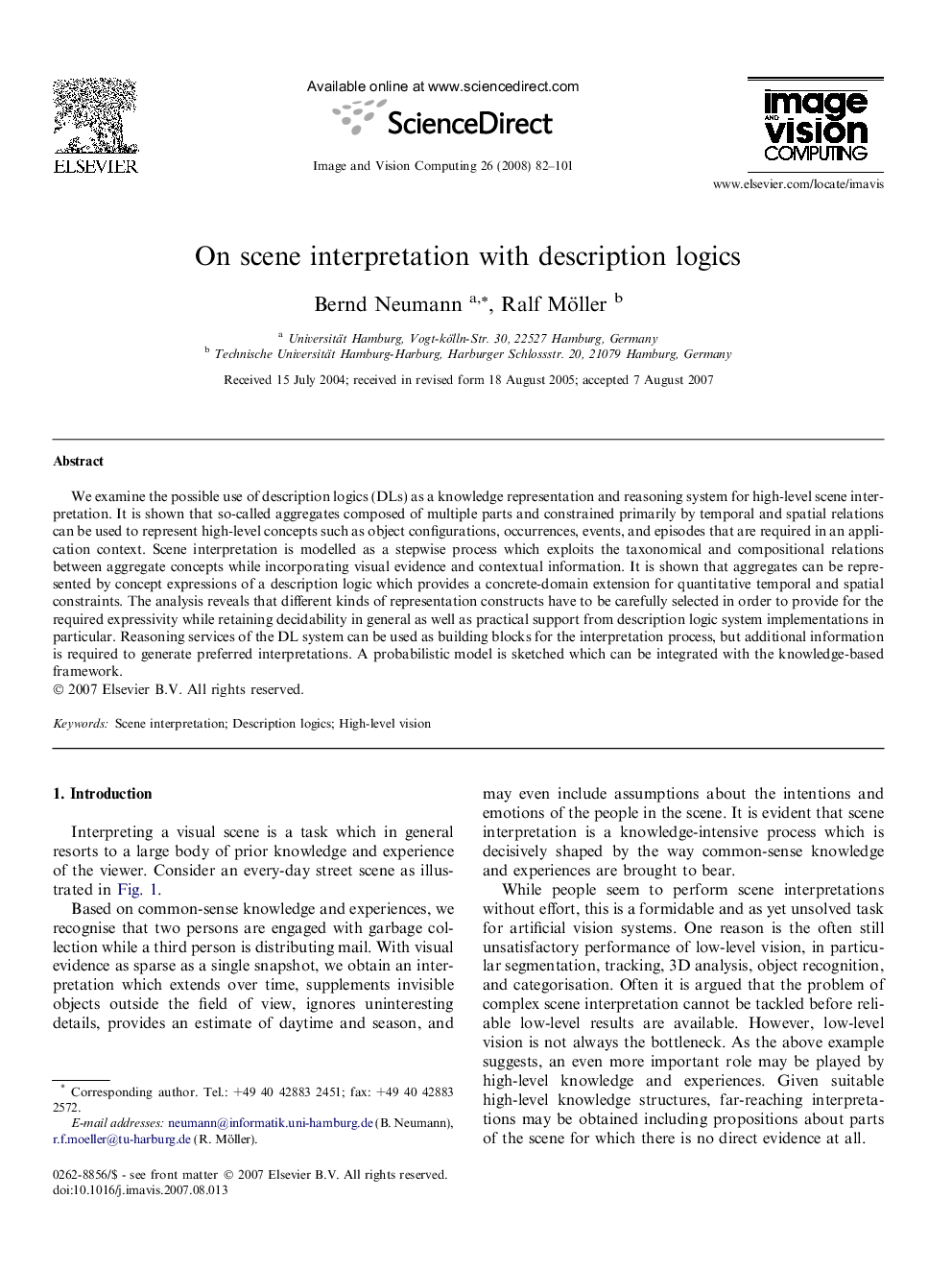| Article ID | Journal | Published Year | Pages | File Type |
|---|---|---|---|---|
| 527038 | Image and Vision Computing | 2008 | 20 Pages |
We examine the possible use of description logics (DLs) as a knowledge representation and reasoning system for high-level scene interpretation. It is shown that so-called aggregates composed of multiple parts and constrained primarily by temporal and spatial relations can be used to represent high-level concepts such as object configurations, occurrences, events, and episodes that are required in an application context. Scene interpretation is modelled as a stepwise process which exploits the taxonomical and compositional relations between aggregate concepts while incorporating visual evidence and contextual information. It is shown that aggregates can be represented by concept expressions of a description logic which provides a concrete-domain extension for quantitative temporal and spatial constraints. The analysis reveals that different kinds of representation constructs have to be carefully selected in order to provide for the required expressivity while retaining decidability in general as well as practical support from description logic system implementations in particular. Reasoning services of the DL system can be used as building blocks for the interpretation process, but additional information is required to generate preferred interpretations. A probabilistic model is sketched which can be integrated with the knowledge-based framework.
